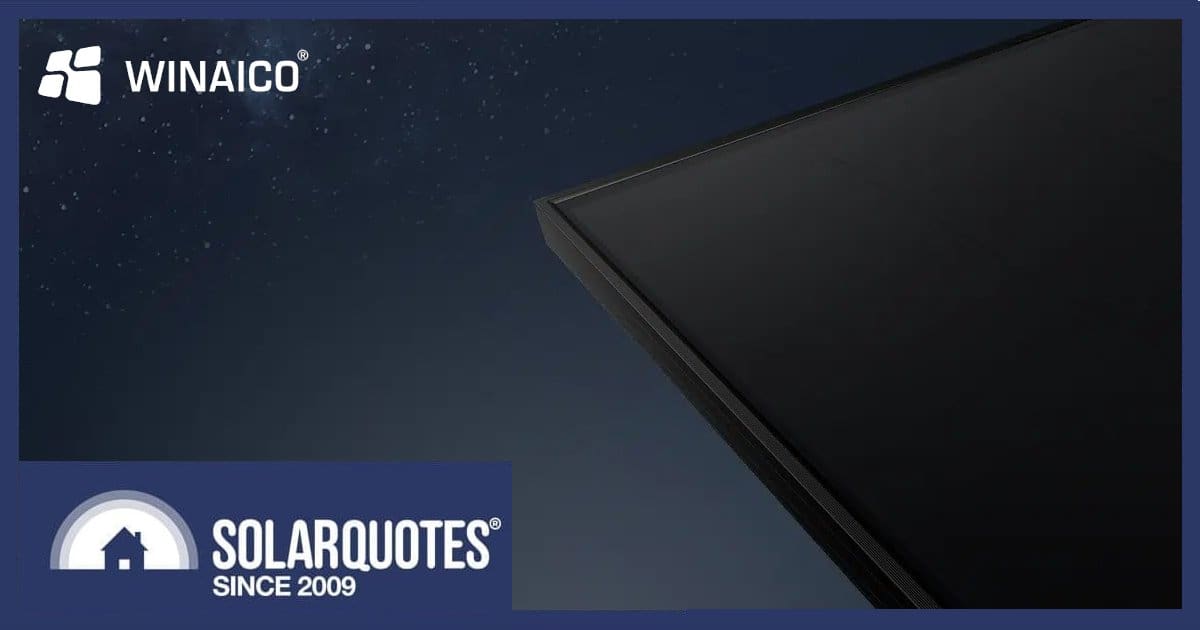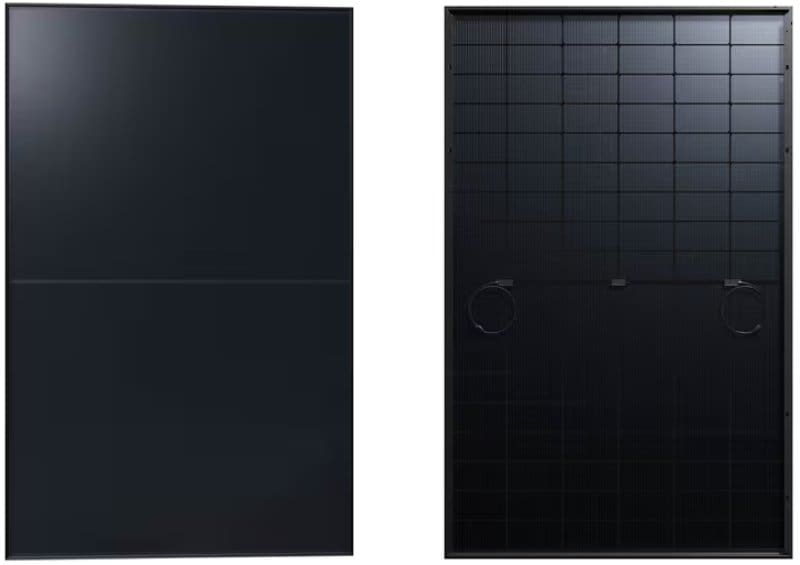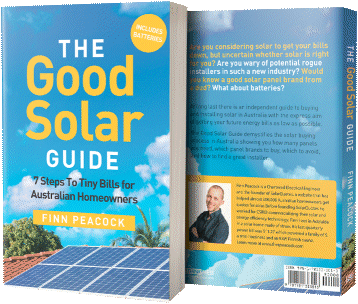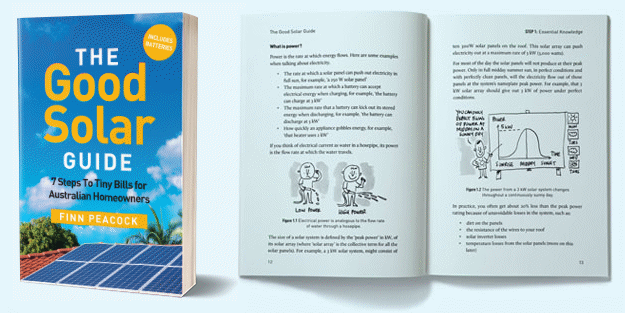
Winaico’s WST-BDX54-B2 WBC Series rooftop solar panels should be available in Australia very soon. Here’s what we know.
The WST-475BDX54-B2 (475 Watts) and WST-480BDX54-B2 (480 Watts) feature back-contact cell technology, which means all electrical contacts are located on the rear side of the cell. There are no front-side gridlines on the panel, maximising the area for harvesting sunlight — and looks pretty schmick too.
Additionally, these solar panels are glass-glass (front and back) and bifacial, offering up to 20% yield gain1 under ideal conditions through capturing reflected light on the rear side of the panel.
WST-BDX54-B2 WBC Series Specifications
- Power output (front face): 475 Watts and 480 Watts
- Number of cells: 108
- Module Efficiency: 23.3% (475 W) and 23.5% (480 W)
- Temperature coefficient of PMax: -0.26%/°C
- Dimensions: 1,800 x 1,134 x 35 mm
- Weight: 25 kg
- Glass: 2mm front and back
- Level 6 salt mist certification – the highest level of salt spray corrosion resistance for solar panels.
- 30-year product guarantee.
- 30-year performance guarantee. No more than 1% degradation in the first year and no more than 0.35% annually from 2nd to 30th year.
- Backed by an Australian support team
- Australian datasheet available here.
At 2.041m2, the WST-BDX is *just* over what we’d usually consider a residential rooftop solar panel (2m2 maximum), and combined with the weight will have some installers justifiably groaning. But aside from that there’s a lot to like about these panels based on the information provided by Winaico. For example, the low temperature co-efficient means performance isn’t impacted by heat as much as some panels from popular brands.
I have no details on recommended retail pricing, but in terms of quality brands currently available in Australia, you can see indicative pricing for high-efficiency solar panels here.
Blair Pester, Managing Director of WINAICO Australia Pty Ltd, says Clean Energy Council (CEC) listing is “well underway” and he’s expecting local availability by late September. Clean Energy Council approval is required for national solar rebate eligibility and in most cases, grid-connection permission. The modules are also about to undergo testing by Structural Engineering Consultants Australia (SECA) for suitability in cyclonic regions.
Initially, the 475-Watt BDX WBC solar panel will be available in Australia (and New Zealand).
More On Winaico
Headquartered in Taiwan but nowadays mainly manufacturing in China, Winaico was founded in 2008 and entered the Australian solar market in 2012. The firm has an office in Sydney.
Something as far as I know unique to Winaico is selected products (including the WST-BDX54-B2 WBC panels) include two years of free system insurance. This not only covers the panels but extends to critical system components such as inverters and certain batteries. It covers against losses due to material damage, interruption of service or reduced yield for the first two years — so any price premium provides some extra peace of mind. The policy can be extended up to a total of five years for an additional cost.
Winaico solar panel reviews on SolarQuotes from Australian customers have averaged 4.8 stars from 228 ratings overall, and 4.9 stars over the past 12 months (23 ratings). Winaico is currently on SolarQuotes’ recommended solar panel brands chart.
If you’re looking for powerful rooftop solar panels, among other options is the Neostar 480W from Aiko. Released earlier this year, the Neostar 480W is 1757 x 1134 mm and a leaner 21.5 kg. But it’s a monofacial panel, so there’s no additional boost from reflected light.
Learn everything you need to know about choosing solar panels for your home.
Footnotes
- On the topic of bifaciality generally and Winaico’s increased yield claim, this Australian study concurs; noting rooftop reflectivity has the most significant impact on the bifacial yield gain potential. ↩


 RSS - Posts
RSS - Posts



Salt mist level 6 is good, but it is no longer the highest. Other modules are tested to severity level 8.
I have a flat roof and planning to do 10 degree tilted east west facing solar panels with a light colored roof.
Its great to see a 475w bifacial panel finally come to market. The main problem with using these bifacial panels is that they don’t yield any material benefit if you mount them on the roof. Not if you are going to fill the roof with solar panels.
Referencing that study saying you could get up to 21% more solar output is a bit misleading because it’s based on modelling that assumes 5m gap between each row which wastes a lot of space where solar panels could go.
Solar panels have dropped in price so much, I think it would be better to simply cover the roof with panels with minimal spacing for maintainance.
If you were laying flat or on a 10 degree tilt with panels not spaced, the difference is maybe 0-4% if that. So there’s no benefit. Hopefully these panels are not priced higher than the Aiko 3S 475W panels that have just hit the market, or they won’t sell much.
Abhishek, in today’s market the bifacial aspect isn’t adding additional cost. For example there are 440W monofacial and 440W bifacial modules in market at the same price point from leading manufacturers. You are correct, flush mounted to a roof doesn’t yield significant benefits, however there is still a benefit in low-light conditions. The study you refer to focuses on commercial installations. For example if you had a very large commercial roof where space is not an issue, however you were installing 100kW of solar modules tilted for optimum performance – the study shows that the bifacial modules will outperform monofacial modules. This is huge if all of the production is going to be consumed and if the bifacial aspect doesn’t add additional cost. Why would you use a monofacial backsheet panel in this case that will potentially cost the same, produce less and run the risk of backsheet failure down the line?
I asked my Solar and battery installer about these panels and he said he couldn’t see these priced by his suppliers, but he could see the Winaco 450w vs the Aiko 2n 460w was showing a $30 per panel higher price for the bifacial panels.
I don’t think they are actually the same price. How could they be when these panels are dual glass?
I am still tossing up what to do, whether 30 degree tilted west with these Winaco 475w bifacial panels or stick with 10 degree tilted east west tilted Aiko 3P 475w. I just wish there was some way to know which would be a better configuration that would maximise the amount of solar generated off the roof and whether it’s worth the added cost.